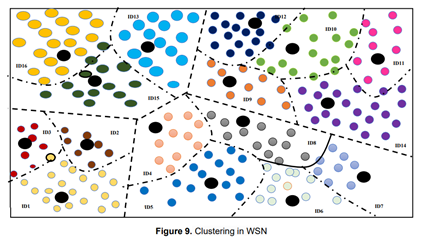As the data volumes continue to increase and the ways of information dispersion across the globe continue to diversify, new scalable methods and structures are needed for efficiently processing those distributed and autonomous data. Grid computing, P2P technology, distributed information retrieval technology, and networking technology all must be merged to address the scalability concern. This week we present you top 5 trending articles on Scalable Information Systems from our library.
- Evolving A Neural Network to Predict Diabetic Neuropathy
The main aim of this work is to identify various risk factors of DN and predict it accurately using ML techniques. Radial basis function (RBF) network is an artificial neural network proposed to obtain better results than traditional ML classification techniques. CART, random forest and logistic regression are existing classification techniques considered. The authors of this paper are Shiva Shankar Reddy, Gadiraju Mahesh, and N. Meghana Preethi. This research article appeared in issue 31 of EAI Endorsed Transactions on Scalable Information Systems.

2. An Energy Efficient Reinforcement Learning Based Clustering Approach for Wireless Sensor Network
The authors of this paper, Navpreet Kaur and Inderdeep Kaur Aulakh propose a Reinforcement Learning (RL) based energy-aware clustering algorithm is by which the neighboring nodes in the cluster selects an appropriate Cluster Head ( CH) by observing the environmental conditions like as energy consumption and coverage that is computed as the distance from the CH to the Base Station (BS). An optimal cluster is selected by each neighboring node, which minimized the energy consumption and network lifetime. The problem of selecting an optimal CH is resolved using the RL approach. Using the RL approach, the CH having the highest reward point is selected for data communication. An Energy Efficient Reinforcement Learning Based Clustering Approach for Wireless Sensor Network appeared in issue 31 of EAI Endorsed Transactions on Scalable Information Systems.

3. Investigation of Social Behaviour Patterns using Location-Based Data – A Melbourne Case Study
The authors of this article, Ravinder Singh, Yanchun Zhang, Hua Wang, Yuan Miao, and Khandakar Ahmed used location-sharing data from Swarm to explore Spatio-temporal, geo-temporal, and behavior patterns within the city of Melbourne. Moreover, they used several tools for different datasets. The authors used the MeaningCloud tool for sentiment analysis and the LIWC15 tool for psychometric analysis. Also, they employed SPSS software for the descriptive statistical analysis of check-in data to reveal meaningful trends and attain a deeper understanding of human behavior patterns in the city. This research paper appeared in issue 31 of EAI Endorsed Transactions on Scalable Information Systems.

4. Big Data Management of Hospital Data using Deep Learning and Block-chain Technology: A Systematic Review
Electronic medical records (EMR) are mostly stored in a client-server database and are supported by enabling technologies like the Internet of Things (IoT), Sensors, cloud, big data, Deep Learning, etc. It is accessed by several users involved like doctors, hospitals, labs, insurance providers, patients, etc. Therefore, data security from illegal access is crucial especially to manage the integrity of data. The authors of this paper, Nawaz Ejaz, Raza Ramzan, Tooba Maryam, and Shazia Saqib describe all the basic concepts involved in the management and security of such data and proposed a novel system to securely manage the hospital’s big data using Deep Learning and Block-Chain technology. Big Data Management of Hospital Data using Deep Learning and Block-chain Technology: A Systematic Review was published in the most recent issue 32 of EAI Endorsed Transactions on Scalable Information Systems.

5. Machine Learning in Computer Vision: A Review
This paper will address the importance of machine learning, state-of-the-art, and how ML is utilized in computer vision and image processing. This survey will provide details about the type of tools and applications, datasets, and techniques. Limitations of previous work and challenges of future work are also discussed. Furthermore, the authors, Abdullah Ayub Khan, Asif Ali Laghari, and Shafique Ahmed Awan identify and discuss a set of open issues yet to be addressed, for efficiently applying ML in Computer vision and image process. This article appeared in the most recent issue 32 of EAI Endorsed Transactions on Scalable Information Systems.
EAI Endorsed Transactions on Scalable Information Systems is open access, a peer-reviewed scholarly journal focused on a scalable distributed information systems, scalable, data mining, grid information systems, and more. The journal publishes research articles, review articles, commentaries, editorials, technical articles, and short communications with a quarterly frequency. Authors are not charged for article submission and processing.
Subscribe to EAI Endorsed Transactions on Scalable Information Systems journal and never miss new content in your field of research.

